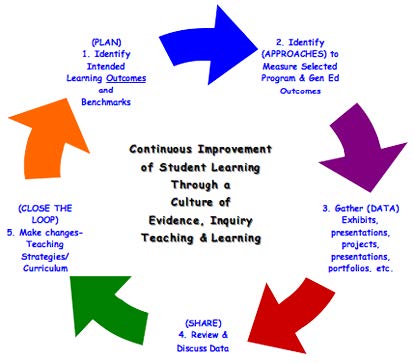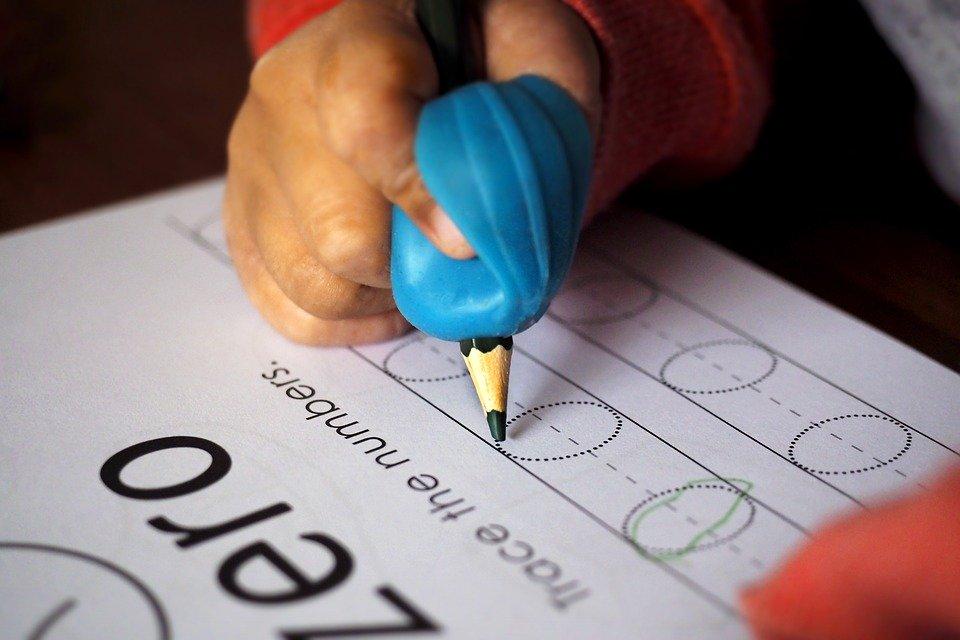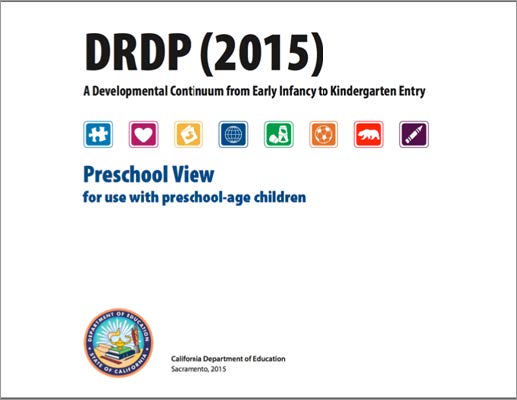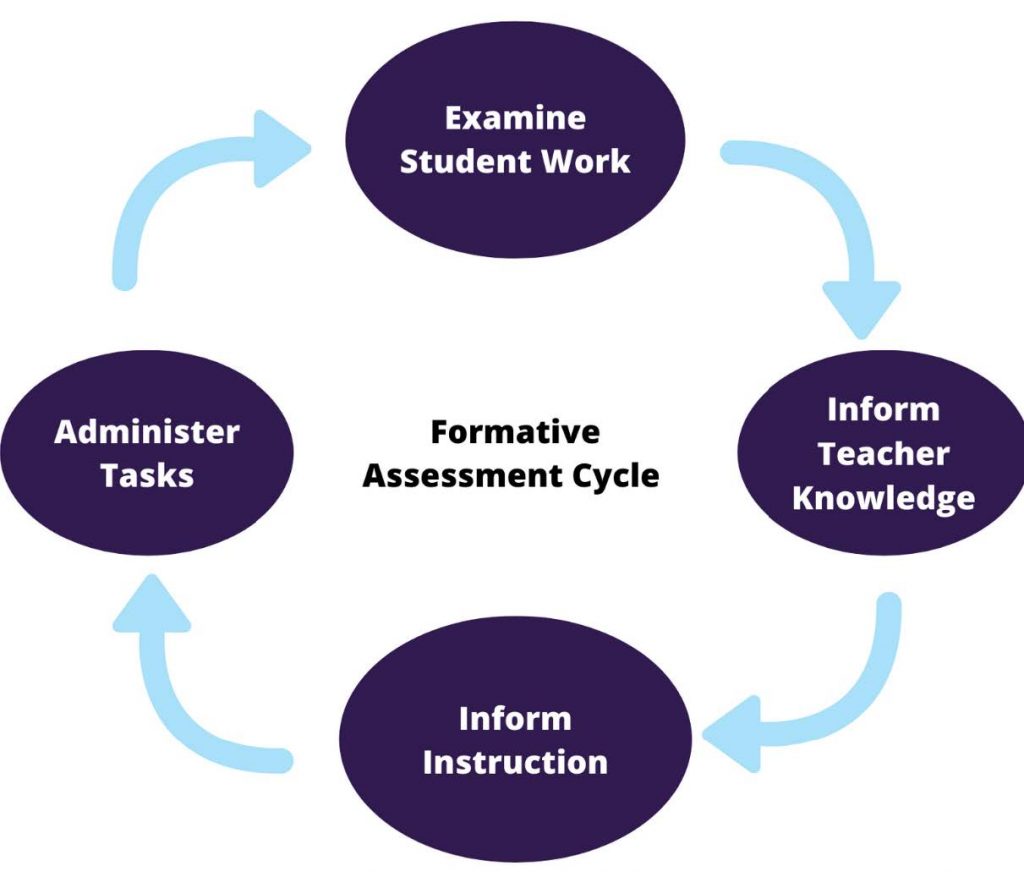35 Assessing Children’s Development
Assessment is “a systematic process which allows for understanding a child’s competencies”[1] Every child in your class needs to be assessed. To properly assess children, we use observations and documentation to determine a child’s abilities, interests, strengths, and areas of development that may need additional support. The information gathered during observations guides the classroom routines, curriculum planning, and implementation to ensure quality care. Over time, assessments record a child’s learning, growth, development, and social behavior. Assessments also provide an opportunity to share information with families that will build a bridge from school to home.

Let’s take a closer look at how we might use assessments in early childhood education. First, assessment is used to inform instruction and to guide teachers as they plan curriculum. With each observation a teacher can assess children’s strengths and capabilities to determine an individualized plan of action with just the “right” balance of independent and group activities across all areas of development (e.g. social, emotional, creative, cognitive, language and physical). When teachers create meaningful curriculum based on the children’s interest and abilities, research indicates that children will take greater strides in academic learning and are more likely to be successful throughout life.
For example, a teacher may notice that one of her students has difficulty joining in and socializing with classmates during group activities. A teacher will then consider activities that would encourage peer interactions while also considering opportunities to support their independence.
Second, assessment is designed for accountability and program evaluation. Assessments provide information that is needed to evaluate program practices and to inform program policies. One of the hallmark traits of a high-quality early childhood program is the practice of continuously monitoring children’s development and responding to their learning needs. When administrators, teachers, and families reflect on program goals and outcomes they can determine specific areas that need improvement. Once areas are identified, they can focus on implementing professional development workshops and training in order to improve their ability in meeting the needs of children and families. For example, upon reviewing the math indicators for all of the kindergarten students in a school, the principal realizes that additional teacher training on math-related materials is needed to support math instruction and student learning across all of the kindergarten classrooms in the school.
Third, assessments are used to support school and family partnerships. Assessment helps teachers communicate important milestones in a child’s development to families. More importantly, when teachers share their assessments with families, there is an opportunity for teachers and parents to work together to support children as they grow. Intentional teachers respect that parents are teachers on the “home front.”
Additionally, families have valuable insight that they can contribute when assessing a child’s needs. For example, a teacher may not observe a child’s ability to identify colors but through a discussion with the parents, the teacher learns that the child identifies colors of fruit at the grocery store. In this way, parents and teachers collaborate to better understand what needs to happen in the curriculum or at home to support the child’s learning and growth. [2]

Let’s take a look at 4 Types of Assessments:
- Screening tools
- Diagnostic assessments
- Formative assessments
- Summative assessments

Screening Tools
According to developmental theories, children may not reach developmental milestones at the same time. In early care and education, we recognize that there is an “acceptable range” for children to reach developmental milestones. That being said, we also recognize that when development does not happen within an expected time frame “red flags” can be raised and teachers may have concerns about developmental disorders, health conditions, or other factors that may negatively impact the child’s development. A developmental screening is the early identification of children at risk for cognitive, motor, communication, or social-emotional delays that may interfere with expected growth, learning, and development, and may warrant further diagnosis, assessment, and evaluation. Programs may conduct the following screenings:
- Developmental screening tools include the domains of cognition, fine and gross motor skills, speech and language, and social-emotional development.
- Social-emotional screening is a component of developmental screening of young children that focuses on the early identification of possible delays in the expected development of a child’s ability to express and regulate emotions, form close and secure relationships, and explore his/her environment and learn.
- Mental health screening is the early identification of children at risk for possible mental health disorders that may interfere with
expected growth, learning, or development that warrant further diagnosis, assessment, or evaluation.
It is recommended that young children receive screenings to help identify potential problems or areas needing further evaluation. By recognizing developmental issues early, children can be provided with treatment or intervention more effectively, and additional developmental delays may be prevented. Developmental screenings should begin early in a child’s life and should be conducted through third grade. Practitioners should use reliable and valid screening tools that are age-appropriate, culturally inclusive and in the home child’s language.
Developmental screenings are often universally performed on large groups of children. The results generated from this type of procedure most commonly are used by programs to identify those few children who may need to receive a more extensive or “diagnostic” assessment for determining developmental delays or special needs. Screenings are brief, and usually effective in catching the most severe cases of children who would need a follow-up evaluation. Screening tools can also be used to assess whether a child is developmentally ready to graduate or move into the next educational level, in other words – a child’s school readiness. There is controversy around whether school districts should be permitted to use readiness tests since school districts are not permitted to deny children entry to kindergarten based on the results of a readiness test. One on side there are those that believe many children are often mislabeled. Because young children can demonstrate a wide range of results based on how comfortable they are at the time of the screening, screening results can be inaccurate and children, especially dual language learners, may be placed into remedial classes or special education programs. On the other hand, some proclaim that the screening process at this point will provide young children and their families with access to a wide variety of services early on.
Diagnostic Assessments
Diagnostic assessment tools are typically standardized for a large number of children. A score is given that reflects a child’s performance related to other children of the same age (and less common gender and ethnic origin). A diagnostic assessment typically results in a diagnosis for a child. Some common diagnoses are related to intelligence, intellectual disability, autism, learning disabilities, sensory impairment (deaf, blind), or neurologic disorders. Persons administering diagnostic assessment tools must meet state and national standards, certification, or licensing requirements. Some diagnostic assessment tools used for determining or identifying developmental issues are The Wechsler Preschool and Primary Scale of Intelligence (WPPSI), the Bayley Scales of Infant Development (BSID), electroencephalogram (EEG), Kaufman Assessment Battery for Children (K-ABC), the Battelle Developmental Inventory (BDI), and the Pre-Language Assessment Survey (PreLAS). Many other diagnostic assessment tools are available for early childhood. The Buros Institute of Mental Measurements at the University of Nebraska publishes the Buros Mental Maturity Yearbook which helps educators and other childcare professionals choose a tool that is reliable and highly regarded in the diagnostic assessment community.
Formative Assessments
The primary purpose of the formative assessment is to gather evidence that teachers can use to inform instruction, implement learning opportunities and measure a child’s learning. As stated in previous chapters, through ongoing observations, evidence is collected and then used to measure the child’s learning. To gather an accurate account of what children are learning and how they are learning, observations should occur during daily activities and routines, and should be conducted indoor as well as outdoor. With this information, teachers make instructional adjustments to close the gap between a child’s current understanding and what the desired goals are for the child as recommended by formal assessment tools like the Desired Result Developmental Profile (DRDP).

Formative assessment can consist of formal assessments or informal assessments . Formal assessments are defined as highly valid and reliable and standardized tools that are administered in a similar manner each time for every child. These tools have standards of comparison (norm-referenced, standards-referenced, and criterion-referenced) to ensure equitable and consistent results. Such tools usually emerge from research studies published by a national company (e.g. Desired Results Developmental Profile (DRDP) or Rating Scales that are based on the acquisition of age-appropriate developmental milestones). Informal assessments, on the other hand, usually may be published, but can also be developed by a teacher or program (i.e. a classroom checklist or frequency count chart). Informal assessments often utilize observable techniques such as anecdotal notes, work samples, and video recordings. Whether formal or informal tools and techniques are used, it is important to note that assessment is not a one-time event since it is difficult to gather valid and reliable information from just one observation technique or from one tool. Formative assessments are on-going.
For best results, intentional teachers are encouraged to assess children through authentic, naturalistic observations. Such observation should be collected throughout the school year, and not just when preparing for family conferences. Another best practice, early care educators are encouraged to actively involve young children with the assessment process. Informal observations and conversations are needed to purposefully plan intentional and individualized activities. Lastly, teachers are encouraged to share learning goals with both children and parents, as well as provide opportunities for children to monitor their ongoing progress. Learning Stories are a great technique to encourage joint collaboration between teachers, families, and children.

Summative Assessments
In primary grades, summative assessment, often called high-stakes assessments, are designed to measure a child’s overall developmental progress at the end of a school year. These assessments can also be administered at certain grade levels for state or local accountability purposes (e.g. Blue-Ribbon Recognition). Summative assessments seek to measure a child’s academic performance. Scores are published and parents are notified of their child’s individual score along with their child’s percentile ranking as compared to other children who are in the same grade. In early care and education however, summative assessments essentially look back to see how effective the teacher or program is at providing high-quality care. This is form of assessment allows families, teachers and administrators to evaluate instruction practices, curriculum, and whether a child is in need of intervention or teachers are in need of professional development. These assessments help recognize whether or not the child has fallen short of, met, or exceeded the expected standards. Although the results of formative assessments are primarily of interest to teachers, families are eager to know how their child is doing socially and academically. Administrators can utilize the assessment information to identify strengths and challenges of curriculum and instruction, in order to make improvements on the next year’s program policies or procedures.
How are Assessments are Used
Planning Curriculum- Teachers use assessments to understand a child’s capabilities and needs. By focusing on what a child can do, teachers then establish individualized goals for that child. By continuing to observe and document milestones, teachers can proactively assess a child’s development and adjust the curriculum accordingly. For example, if a teacher determines that a child needs support in their fine motor development, activities that exercise the pincer grasp will be implemented.
Documentation on behavior should be considered when planning curriculum. If data shows reoccurring conflict taking place in a specific area, teachers should assess if there are enough materials and space in that area, and decide if the materials provided are age-appropriate. For example, after reviewing the data, the teachers concluded that conflict was occurring in the dramatic play area because there were not enough baby dolls for the number of children playing at the same time.
Ensuring School Readiness – Whether you use checklists or the DRDP, both assessments will collect data about milestones of development. Recording a child’s progress for each domain of development will determine school readiness. School readiness refers to children having enough knowledge and experience to succeed in a kindergarten classroom.
Adjusting the Classroom – Assessments can also be used to adjust teaching styles, classroom setups, daily schedules, and routines. When observing children, teachers should document how the class responds to certain routines, transitions, and language. For example, if the data collected shows that children are having a difficult time falling asleep during nap time, the daily schedule can be adjusted to allow more outdoor play before nap time.
Data can also show us why certain behaviors are occurring. When reviewing data, evaluate what happens before the behavior is observed, and assess what changes can be made to redirect the child. For example, if conflict and running in the classroom are occurring in the morning, the parent drop-off could be moved to the outdoor classroom to allow a large space for children to play and interact before going inside.[3]
Pin It!
Further Information on Authentic Observation and Assessment
Read this article for more information on New Learnings in Early Care and Education.
Watch this video to learn more about authentic assessment.
Watch this video to learn more about Organizing for Assessment in ECE.
- The National Academies of Sciences, Engineering, and Medicine. (2015). Chapter 7: Knowledge and Competencies. In Transforming the Workforce for Children Birth Through Age 8: A unifying Foundation . Retrieved from https://www.nap.edu/read/19401/chapter/13 ↵
- The National Education Goals Panel. (2000). Principles and Recommendations for Early Childhood Assessments. Retrieved from https://ectacenter.org/eco/assets/pdfs/NEGP_goal1_Assessment_Principles.pdf ↵
- The National Education Goals Panel. (2000). Principles and Recommendations for Early Childhood Assessments. Retrieved from https://ectacenter.org/eco/assets/pdfs/NEGP_goal1_Assessment_Principles.pdf ↵

